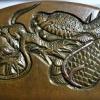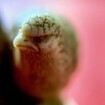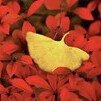All Activity
- Past hour
-
military knots in boxs F/S
ChrisW replied to lonely panet's topic in Assorted Samurai, Japanese Art and Related Items
Sorry, I'll clear a spot for you! Go ahead and send me your payment info and I'll work it out tonight! - Today
-
Why is saving for a sword a taboo ?
Matsunoki replied to Rayhan's topic in General Nihonto Related Discussion
Also remember that not everyone is a blade collector. Many are sword collectors ie the whole package together with untouched koshirae. Not everyone is an elitist blade hunter. If that is your “thing” - fine but don’t assume others even want to follow the same path. The sword collector most likely has a whole different set of objectives and tolerances which could easily mean accepting an unimportant blade or one in poor condition in return for some nice fittings. It has already been said above I’m sure but judging what others enjoy collecting based on your own views is irrelevant -
This Naminohira Rayhan mentioned is such a beautiful piece. Plus it s ubu https://www.toukenkomachi.com/index_en_tachi&katana_A060224.html I was going to get it but something I liked more came up so I had to pass. Naminohira has always been one of my favorite schools and they tend to be priced low and overlooked as a more functional school lacking in artistic features. It is also one of the only school where I prefer their Sue over their Ko counterpart
-
Why is saving for a sword a taboo ?
Robert S replied to Rayhan's topic in General Nihonto Related Discussion
On the other hand, if it really is the aesthetics of the blade that captivate you, it may be a $1500 blade that is "just right", even if you could afford $50K. It's not going to be "that name" with "that history"... but that's not always important. It may be something else entirely that is the goal of the purchase. My last blade was a sad little overpolished and belt sanded wakizashi for $150... and it's a wreck, but I'm learning lots from it, and will have fun making koshirae for it. -
There you go, proof one can work out what a sword is from images, well done to all.
-
Personally, I think that a modified nakago like this would be considered ubu by shinsa.
-
-
Thanks, I was curious about this being reshaped as you mentioned as well as the Niji Kunitoshi I saw at the SF show had a description as the nakago being ubu but also has a kiri jiri type nakago-jiri. It seemed a bit odd to me but the translation of the sayagaki and setsumei both say ubu. So I wonder if maybe just the tip was slightly altered but the nakago otherwise remains the same and if that still counts as ubu.
-
First of all - modification the nakago-jiri is my assumption. Not shins opinion However, I would expect iriyamagata-jiri for an early Yamato blade. It is very unusual for Hoki Here's Markus' full translation of setsumei if anyone is interested: Tachi, Mumei: Yasutsuna (安綱) Measurements Nagasa 80.4 cm, sori 2.8 cm, motohaba 3.0 cm, sakihaba 1.7 cm, kissaki-nagasa 2.7 cm, nakago-nagasa 23.6 cm, nakago-sori 0.6 cm Description Keijō: shinogi-zukuri iori-mune, slender mihaba, noticeable taper, deep koshizori, sori also decreases somewhat towards the tip, funbari, ko-kissaki Kitae: rather standing-out itame that is mixed with mokume and that features ji-nie, much chikei and jifu, the steel is blackish Hamon: nie-laden ko-midare that is mixed with ko-gunome, ko-chōji, many ashi and yō, some small tobiyaki that appears in an intermittent manner, nijūba-like elements, and kinsuji and sunagashi Bōshi: sugu with a rather pointed kaeri and tending with much hakikake to kaen Horimono: on both sides a bōhi that runs as kaki-nagashi into the tang Nakago: ubu, iriyamagata-jiri, yasurime are indiscernible, one mekugi-ana, mumei Explanation Yasutsuna (安綱) was the most representative smith of the Ko-Hōki group and the meikan date his active period around Daidō (大同, 806–810). The style of existing works, however, suggests that he was active somewhat later, that is, probably in the late Heian period. Among surviving signed Ko-Hōki works, relatively many go back to Yasutsuna, and the smith is particularly famous for his meibutsu Dōjigiri-Yasutsuna (童基切安綱). This blade has with its slender mihaba, deep koshizori, and funbari an elegant tachi-sugata. The kitae is a standing-out itame that features chikei, jifu, and ji-nie, and the steel is blackish. The hamon is a nie-laden ko-midare that is mixed with ko-gunome and other elements. Thus, the blade is of a classical elegance that reflects very well the typical style of Ko-Hōki works, is of an excellent deki as well, and we are in agreement that the attribution should be to Yasutsuna.
-
AussieMacca1972 started following Greg F
-
Funny, selling my collection of Star Wars Legends Comics is what allowed me to purchase my first gunto May the force be with you, -Sam
-
64. …bought my first german trench knife on the flea market. I was 18 then and it cost me DM10,-
-
In the case of a nakago where the nakago-jiri has been changed but not shortened, would that still be considered ubu?
-
I am going to look over all you sent. But I feel so much more relaxed after seeing some of the Nihonto sale listings. Now I can see there is not going to be a shortage of options now or in the future. I cannot thank you enough for taking the time to help me. In fact I feel so much more calm now I can finally go to sleep. I have been awake for a few days looking at Nihonto and posting and talking to people. So I will have questions after I am rested and clear minded. Lol. Truly appreciate this. I am a registered nurse and I am used to helping people but not used to people actually helping me.
-
53. Jumped fully into nihonto collecting at the end of 2022….. former Star Wars collector for most my life and always had a passion for Japanese swords and decided to switch my focus and haven’t looked back….. big Star Wars collection helped me secure some quite beautiful introductory swords.
-
Based solely on the pictures, #1 fooled me because of the very first kanji. In the picture, the lower ‘hook’ angles down, but in the oshigata (provided later) the lower ‘hook’ curves upward. In the mei I have witnessed, Tadahiro’s first kanji the lower ‘hook’ curves upward. Maybe it was the slight angle the blade was laying at when the pic of the nakago was taken, but you can see the difference between the photo and oshigata. Guess it pays to have all the info before trying to make a determination.
-
Koto Wakizashi - Bizen Osafune + Koshirae + Shirasaya.
AussieMacca1972 replied to 2devnul's topic in Swords and Edged Weapons
This looks very much like a Norimitsu. Nakago shape is very distinctive of this school from that era. Is this papered? -

Legit copper or very good fake?
Scogg replied to John C's topic in Auctions and Online Sales or Sellers
The lowest serial number that I have recorded is #4, and the source is Donald Barnes, which is also listed in Dawsons. The lowest number I've ever seen online (with my own eyes), is #71 with matching saya. Shared here on the NMB earlier this year. 161 is very low, and would be a valuable addition to any Japanese military sword collection. But for 9k?! I’d rather have a papered koto blade in nice polish If anyone has questions regarding 95s, I'm always happy to share what i've gathered. All the best, -Sam -
Hello, Selling this mumei Wakizashi in Shirasaya Some ware forging imperfections on Shinogi can be observed. The polish is relatively fresh. Total length of the blade: 61.8cm Nagasa: 47.3cm Sori: 1.2cm 650eur excluding shipping Sergio Martins
-
Hmmm interesting.....Well done. Separately, I can support what has been already said by various parties. This is an outstanding blade and actually I would say it looks much better than the school it is usually associated with. In other words, its jigane and jihada are much finer and much tighter than the school's. However, the nie is excellent as one would expect of the master
-
12 of them are ubu for Juyo Another 8 for Jubi/JuBun/Kokuho
-
I also saw this amazing blade in May. One of the standout pieces in a collection of superlative swords. I was truly honoured to have the chance to see this masterpiece in person. With a nagasa of 80.4, excellent deki and ubu all means this is a very important example of ko-Hoki workmanship by one of the periods pre-eminent smiths.
























